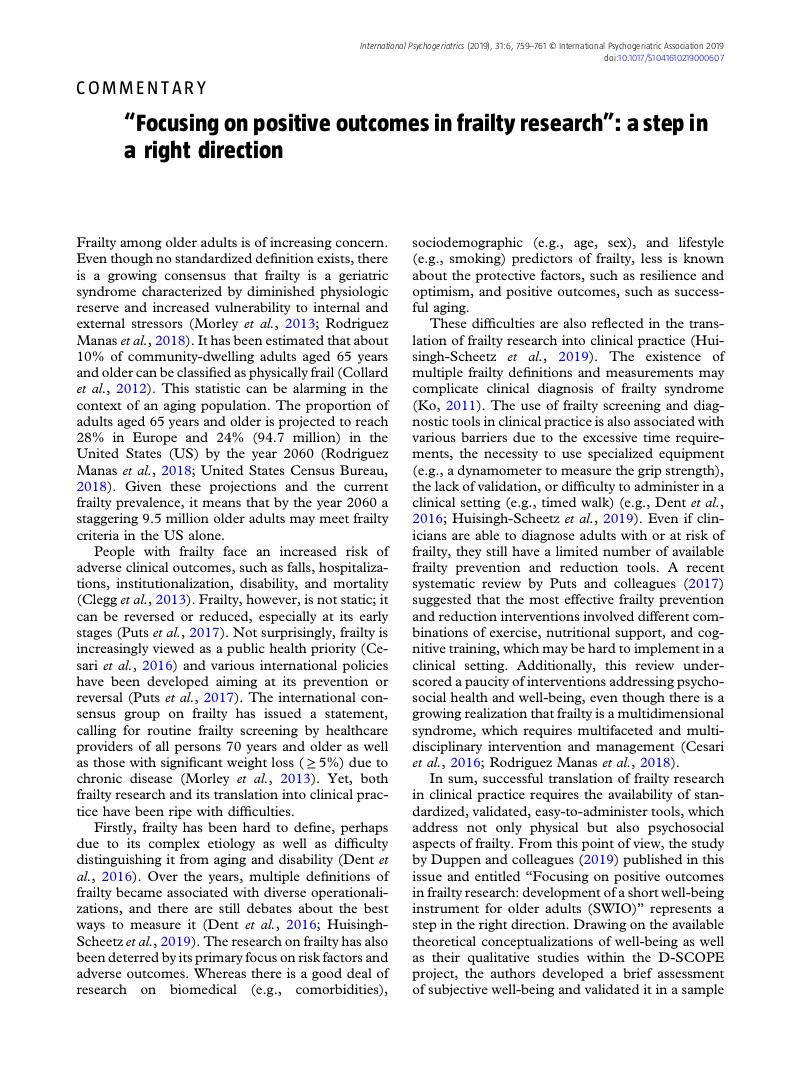Crossref Citations
This article has been cited by the following publications. This list is generated based on data provided by Crossref.
Jeste, Dilip V.
2019.
Frailty and mental health: association with cognition, sleep, and well-being in older adults.
International Psychogeriatrics,
Vol. 31,
Issue. 6,
p.
755.
Biçak Ayik, Derya
Cengiz, Zeliha
and
Isik, Kevser
2024.
The effect of frailty levels of older individuals on their mental well‐being and depression levels.
Psychogeriatrics,
Vol. 24,
Issue. 3,
p.
637.



